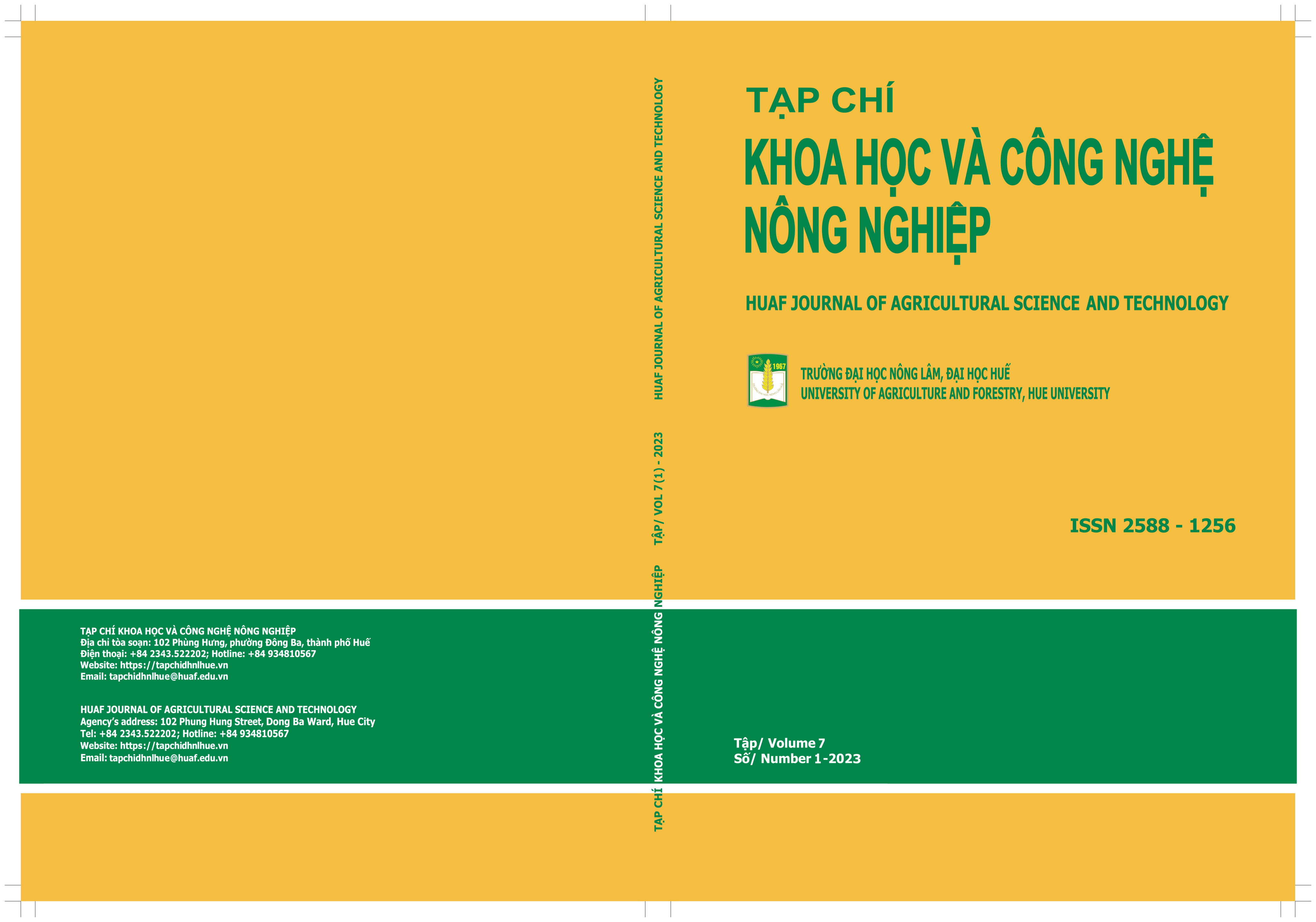##plugins.themes.huaf_theme.article.main##
Abstract
ABSTRACT
This study uses Landsat 8 OLI satellite images to assess the development status of the acacia and pine forests and initially learn about the health status of acacia and pine forests through the Normalized Difference Vegetation Index (NDVI) vegetation index in Huong Thuy town, Thua Thien Hue province. Research methods include collecting secondary data, field data, Landsat 8 OLI satellite images in 2021, and Maximum Likelihood image interpretation algorithm based on image objects, and an NDVI vegetation index. The results show that the overall interpretation accuracy is quite high, reaching from 79,5% to 84,2% and the Kappa coefficient is quite good, ranging from 0,58 to 0,60. The forest cover areas from remote sensing image interpretation are consistent with the data of the local government agencies in Huong Thuy town and with the reality of afforestation. The application of the classification of plant health in general and the types of acacia and pine forests according to the NDVI vegetation discrimination index is quite suitable to assess by observation. The assessment results show that the majority of acacia and pine forests have average health quality, accounting for more than 68%, good health acacia and pine forests account for just over 16% and more than 12% of the area has low health. However, research on assessing the health of acacia and pine forests by the NDVI index still has many limitations that have been raised to be overcome in the proposal for further studies.

